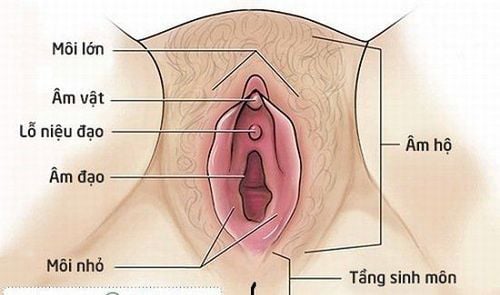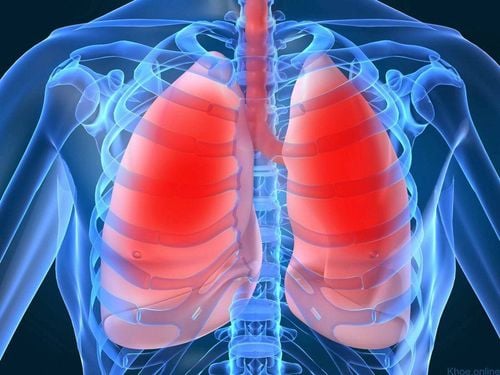This is an automatically translated article.
The drug Mitoxantrone (novantrone) belongs to the Topoisomerase II/Anthracenedione inhibitor class of drugs. Mitoxantrone is effective in stopping the growth of tumor cells. Patients should only use Mitoxantrone when prescribed by the treating doctor.
1. What is Mitoxantrone?
Mitoxantrone belongs to the Topoisomerase II/Anthracenedione inhibitor class. Mitoxantrone has the ability to block the action of an enzyme in cells called topoisomerase, which is required for cell replication and tumor growth. Topoisomerase is responsible for keeping the cell's DNA in the right shape for division. Blocking this enzyme leads to DNA breakage and cancer cell death. The drug also acts like an anthracycline. Anthracyclines work by disrupting DNA replication, which is necessary for cancer cell growth.2. Instructions for using Mitoxantrone
Mitoxantrone is given by intravenous injection. Dosages may vary as they depend on the size and type of the tumor. Before starting treatment with the drug, you may order liver function tests and a complete blood count to determine your neutrophil and platelet counts. The medicine is blue in color and may make your urine green or blue for a day or two after taking Mitoxantrone. Some patients may also notice a bluish discoloration of the eyes. Notify your doctor if you have difficulty or pain while urinating.
Mitoxantrone medicine can cause pain for users. This could be due to the drug leaking out of the vein at the injection site, leading to potentially serious tissue damage. If the injection site becomes red, swollen, or painful at any time during or after the injection, notify your healthcare provider immediately. Patients should not arbitrarily use anything on the injection site without instructions.
3. Possible Side Effects of Mitoxantrone
Side effects caused by Mitoxantrone can vary from person to person. Symptoms can be controlled with additional medication. The side effects caused by Mitoxantrone are quite common and important such as:
3.1 Low white blood cell count and inflammation Mitoxantrone medicine can cause life-threatening infections. White blood cells (WBCs) play an important role in fighting bacteria that cause infections.
If you have been treated and the white blood cell count continues to decrease, you should immediately notify your doctor to change the dosage or change the treatment method. Some signs that the white blood cell count is tending to decrease are: more severe infection, high fever, cold, sore throat, shortness of breath, fever, burning or pain when urinating.
Some tips to prevent infection:
Practice frequent hand washing with soap to prevent the spread of infection. Avoid people who have a cold, fever or cough or live with someone who has these symptoms. People who are sick do not handle livestock waste. Keep open wounds on the body clean, otherwise it can make the infection worse. 3.2 Heart problems Mitoxantrone can cause or worsen pre-existing heart problems including congestive heart failure (CHF). Heart problems can appear during treatment with the drug or years after treatment. You will have a baseline test of your heart function prior to treatment with Mitoxantrone, which may include an electrocardiogram (ECG), echocardiogram, or a MUGA scan.
Some symptoms may accompany such as sudden weight gain, chest pain, left arm pain, nausea, rough skin, ankle swelling.
3.3 Patients with anemia (reduced red blood cell count) Red blood cells contain hemoglobin, which carries oxygen to tissues and organs throughout the body. A low red blood cell count can make you feel tired or weak. When the red blood cell count is much lower than the normal limit, you may receive a blood transfusion.
3.4 The number of platelets decreases When the vessel wall is damaged, the platelet cells will gather and perform the platelet aggregation process right at the wound. This process plays an important role in blood clotting, so a low platelet count means you have a higher risk of bleeding. Some symptoms can be seen in this condition such as nosebleeds, bloody urine and stools, bleeding gums.
3.5 Secondary Cancer Secondary cancer is cancer that develops as a complication of treatment for another cancer. This is quite rare, but you should still be on the lookout for the risks. In most cases, the secondary cancer associated with chemotherapy is a blood cancer (leukemia, lymphoma). This can happen years after treatment. The cause of this condition is due to the patient taking too high a dose and repeating it many times.
3.6 Diarrhea If diarrhea occurs after taking Mitoxantrone, you may be prescribed an additional anti-diarrheal medication. In addition, to limit this problem you can try eating low-fiber, bland foods, such as steamed rice and boiled or grilled chicken. Foods rich in soluble fiber include: bananas (ripe), canned fruit, apple sauce, boiled potatoes, white rice, oatmeal, rice cream, white flour products, cream of wheat and potato chips can help you relieve diarrhea. Drink 8-10 glasses of non-alcoholic, caffeine-free water each day to prevent dehydration.
3.7 Hepatotoxicity Mitoxantrone can be toxic to the liver, so you should ask to have your liver function checked while taking it. Clinical manifestations of liver toxicity include yellowing of the skin or eyes, dark or brown urine, or pain in the abdomen.
In addition, patients may experience other side effects of the drug such as nausea, vomiting, fatigue, hair loss, mouth ulcers, anorexia, decreased appetite, peripheral edema (edema of the feet, hands, eyes, and eyes). ankle),...
3.8 Allergic reactions In some cases, patients may have an allergic reaction to Mitoxantrone. Signs of a reaction may include: shortness of breath or difficulty breathing, chest pain, rash, flushing or itching, or a drop in blood pressure. However, this side effect is less common.
4. Effects of Mitoxantrone on fertility
Mitoxantrone can cause birth defects in the fetus, so you should not intend to have a baby while taking the drug (in both men and women). Mitoxantrone can stop your period, but it's still possible to get pregnant during this time. Therefore, caution should be exercised when using Mitoxantrone. Women who are breast-feeding should not use Mitoxantrone.
Mitoxantrone has the ability to make cancer cells die, slow or stop the growth of tumors. Drug administration should be performed by trained medical personnel. The drug can cause many side effects so you need to research carefully before using Mitoxantrone and talk to your doctor.
Above is all the important information about Mitoxantrone. Using the right dosage will help the treatment process be more effective and safe for the patient's health.
Please dial HOTLINE for more information or register for an appointment HERE. Download MyVinmec app to make appointments faster and to manage your bookings easily.













